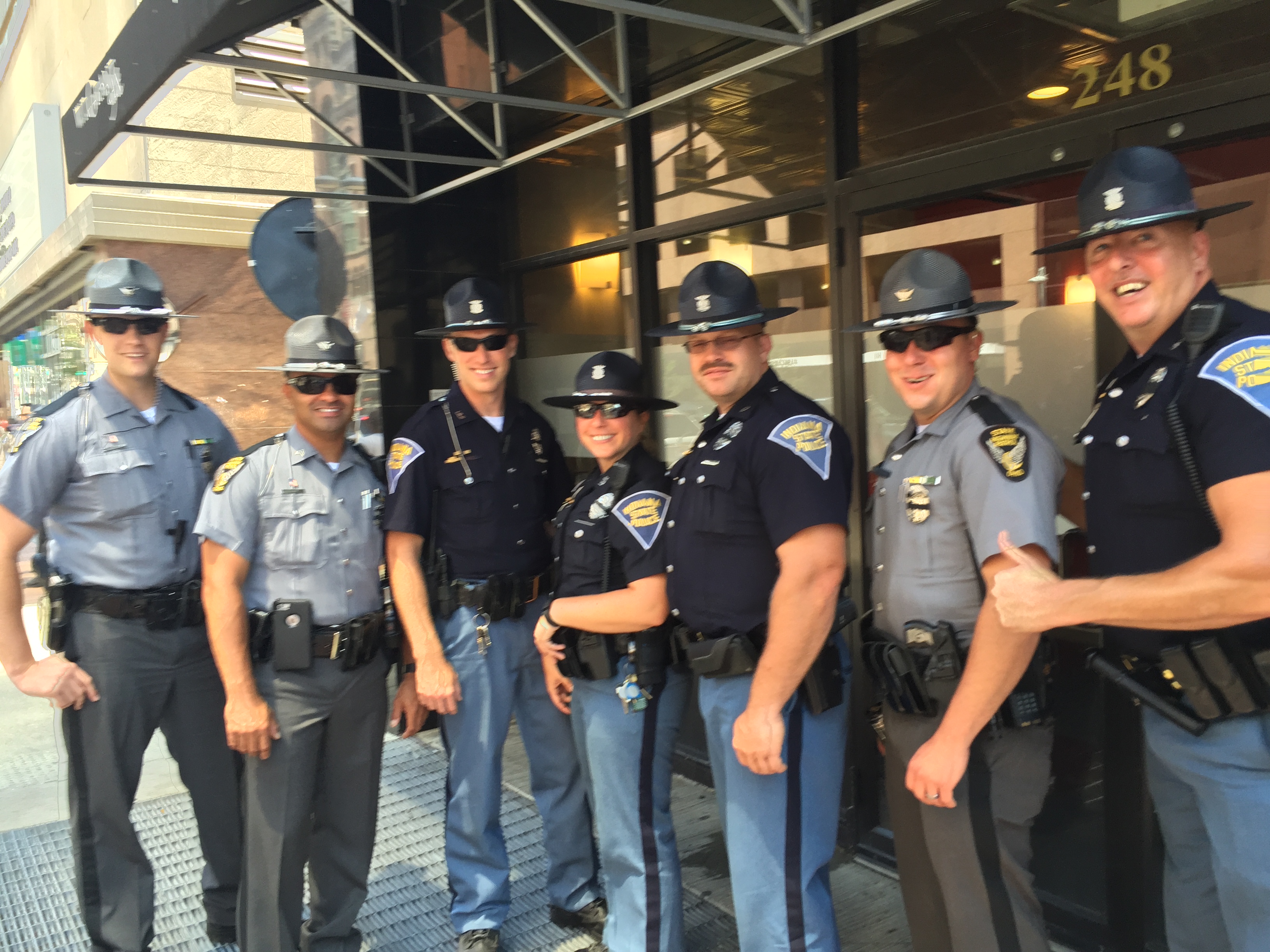


Cleveland, Its Police and the Republican National Convention: How Crisis Management Prevented a Crisis
By Thom Fladung
Hennes Communications
The 2016 Republican National Convention hadn’t yet ended in Cleveland when the questions started from old friends in St. Paul, Minnesota.
The first I noticed was a tweet from Rachel Stassen-Berger, the St. Paul Pioneer Press Capitol bureau chief, on the morning of July 21, the RNC’s final day: “Has anyone done a think piece on why the Cleveland protests have fizzled so far? Compared to the 2008 St. Paul convention it’s very tame.”
Robert Moffitt, communications director for the American Lung Association of Minnesota, joined that Twitter conversation within a few minutes: “Been wondering that myself. Still, let’s not jinx it and hope for a peaceful conclusion tonight.”
Apparently, Cleveland jinxes are history. RNC 2016 started peaceful and stayed peaceful. To be sure, there was plenty of protesting and yelling, some marching and 24 arrests.
But that stands in stark contrast to RNC 2008 in St. Paul, when I was editor of the Pioneer Press. In St. Paul, there were 800 arrests. The enduring image from the streets is police in riot gear, wooden clubs at the ready. The enduring memory for the journalists who covered it? As another former Pioneer Press colleague wrote to me on Facebook: “Still feel the burn in my eyes from the tear gas.”
Fred Melo of the Pioneer Press, who also was there in 2008, remembered it like this for a recent story: “Looking back eight years, Minnesotans still recall with a sense of wonder the protests that filled the streets of St. Paul with raucous chants, eye-searing gas and officers of the law in ‘storm trooper’-like riot gear.”
The reality of RNC Cleveland 2016 also stands in stark contrast to the predictions of a convention, fueled by the emotions stirred by Donald Trump, that would all but have the streets of Cleveland running with blood.

The Republican National Convention in St. Paul in 2008 was marked by protesters’ violent clashes with police – resulting in 800 arrests.
Instead, as the Washington Post put it in a headline: “We were promised a riot. In Cleveland, we got a block party instead.”
What happened? I haven’t seen the definitive “think piece” that Stassen-Berger called for on why RNC Cleveland turned out the way it did. But I’ve seen plenty of smart journalism and observations that hit on these themes:
- Friendly police. The Cleveland police and their colleagues from around the nation showed up in shirtsleeves, adopting a friendly attitude and seemingly interacting with everyone – and they pursued that approach relentlessly for four days. Dan Zak, in the aforementioned Washington Post story, wrote: “This week, the police have been unflinching in their niceness, at least from this reporter’s observations.” In 2008, I’m sure the St. Paul police and their colleagues would have preferred that kind of interaction. But the St. Paul RNC seemed to spiral out of control quickly. A nighttime march early in the St. Paul convention drew 2,000 people, turned violent and police used tear gas, concussion grenades and pepper spray. From there, it was on.
- Lots of police. At the same time, there were a lot of police being nice in Cleveland. Walking around you often had the sense that the protesters were far outnumbered by both police and media. As cleveland.com’s Peter Krouse put it, “The show of police force was a remarkable aspect of the Republican National Convention, especially outside the secure area around Quickens Loan Arena. There were police on foot, on bikes, riding motorcycles at high speed while escorting buses filled with more police, inside vehicles, on rooftops, even on horseback.”
- Pedaling police. The 300-strong police bike patrol seemed to be one of the most effective crowd-control tools, as cleveland.com’s Eric Heisig reported.
- Social media savvy police. Cleveland Police made Twitter and other social media work for them, wrote Ann Mulvany on Ragan’s PR Daily. She noted that the police used social media to dispel rumors, provide information on road closings and report on arrests – and they did it with personality, further humanizing themselves.
- A top cop on the front lines. Cleveland Police Chief Calvin Williams seemed to be everywhere, wrote cleveland.com’s Cory Shaffer, “leading a crew of dozens of bicycle officers who used their bikes as mobile barricades; restraining a well-known conspiracy theorist on Public Square after an argument pushed the crowd into a frenzy; hugging a protester; praying alongside Donald Trump and Hillary Clinton supporters.”
- Right space, right time. The Plain Dealer’s Steve Litt wrote that what turned out to be “a festive celebration of free speech” could be credited to the police and “the way in which visitors and police were able to use streetscapes, parks and other civic infrastructure that have taken decades to build, and without which the convention would have been inconceivable.” During RNC week, the $50 million spent on Public Square appeared to be worth every penny.
Finally, St. Paul 2008 and Cleveland 2016 reminded me – again – that you can’t predict a crisis. In fact, you can’t predict, period. In 2008, the state with the stereotype of Minnesota Nice was shattered by four days of rage. In 2016, the city with the river that burned had four days of calm. Nobody predicted either.
But Cleveland and its police clearly planned for a crisis. And as a result, didn’t have to deal with one.
Before joining Hennes Communications, Thom Fladung spent 33 years working for daily newspapers, including six as editor of the St. Paul Pioneer Press.
Photo Credit: copyright 2016 by Bruce Hennes